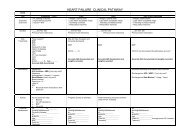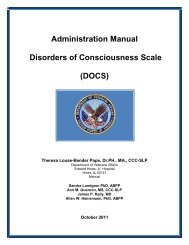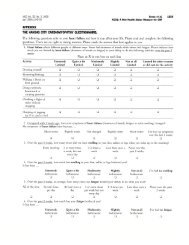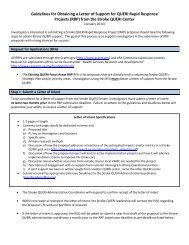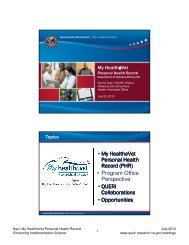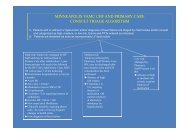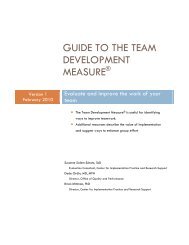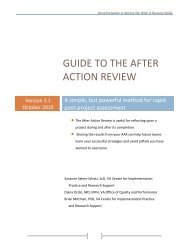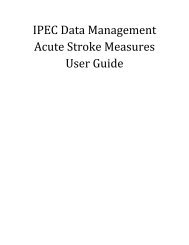The Veteran Supported Education Service Treatment Manual: VetSEd
The Veteran Supported Education Service Treatment Manual: VetSEd
The Veteran Supported Education Service Treatment Manual: VetSEd
Create successful ePaper yourself
Turn your PDF publications into a flip-book with our unique Google optimized e-Paper software.
How to Identify Potential Barriers<br />
Steve, a 24 year old <strong>Veteran</strong> had his hopes set on attending the big state university<br />
with the winning football team to pursue his certification as a plumber. However, upon<br />
exploring the school further he learned that it did not offer the certification he wanted<br />
and that it had no <strong>Veteran</strong>-specific services outside of a financial aid coordinator.<br />
Steve was very disappointed and approached his peer <strong>VetSEd</strong> provider saying he was<br />
going to ―forget‖ about school for now. <strong>The</strong> peer <strong>VetSEd</strong> provider used effective<br />
communication skills and listened in a non-judgmental manner, then reflected the<br />
frustration that Steve was experiencing. <strong>The</strong> peer <strong>VetSEd</strong> provider then asked Steve if<br />
it would be ok for them to spend a few minutes to think about the barriers Steve<br />
experienced. <strong>The</strong> provider explained that in his own educational pursuits as well as in<br />
working with other <strong>Veteran</strong>s, he has found that there is a way over or around most<br />
barriers. Steve and the peer <strong>VetSEd</strong> provider engaged in a 10-minute conversation<br />
about barriers. <strong>The</strong>y identified the school‘s lack of a plumbing certification program<br />
and extensive <strong>Veteran</strong>-specific services as ―external barriers‖ and Steve‘s feelings of<br />
disappointment and wanting to give up as ―internal barriers.‖ <strong>The</strong> provider<br />
normalized Steve‘s feelings and highlighted how far he had come in recent months.<br />
<strong>The</strong> peer <strong>VetSEd</strong> provider then asked Steve if he would consider engaging in<br />
additional school searches to explore what types of institutions provide plumbing<br />
certificates and if any of these instructions have relationships with the local state<br />
university. After this exchange Steve was more motivated to continue the search.<br />
III.<br />
THE GET PHASE OF <strong>VetSEd</strong><br />
As a <strong>Veteran</strong> develops or completes an education plan he will begin the “Get” phase of<br />
Choose, Get, Keep. In the Get phase, we describe those steps that are important to<br />
beginning an educational or training program. <strong>The</strong> following section provides<br />
information about a) benefits that may be used or available to the <strong>Veteran</strong>; b)<br />
enrolling/getting admitted to school, and c) setting a schedule.<br />
A. Benefits<br />
Financial benefits are essential for a <strong>Veteran</strong> to be able to successfully return to school.<br />
<strong>The</strong>re is a range of available benefits. Thus, careful consideration and exploration of<br />
them is needed. Assistance in understanding benefits and what to apply for can help<br />
<strong>Veteran</strong>s sift through what can be a confusing and frustrating process. In order to help<br />
<strong>Veteran</strong>s most effectively, it is best that you are armed with basic knowledge of available<br />
44 | P a g e



